
3.211 Joseph Kosuth, "One and Three Chairs", 1965. Mounted photograph
If you have identified yourself as a confused museum visitor, imagine how the New York public behaved when the artwork One and Three Chairs by Joseph Kosuth (1945-), was first shown at MoMA in 1965. At that time, conceptual art, an art that is not necessarily linked to an aesthetic object, was beginning to emerge..

Thomas_DreherKonzeptuelle_KunstKosuthOne_and_Three_Chairs
One and Three Chairs, 1965, is a work by Joseph Kosuth. An example of conceptual art, the piece consists of a chair, a photograph of the chair, and an enlarged dictionary definition of the word "chair". The photograph depicts the chair as it is actually installed in the room, and thus the work changes each time it is installed in a new venue.

randall garrett // art and practice February 2013
Joseph Kosuth's Self-Defined Object (Orange), 1966. Photograph: Zan Wimberley/Joseph Kosuth and Anna Schwartz Gallery.. One and Three Chairs (1965), in which a chair,.
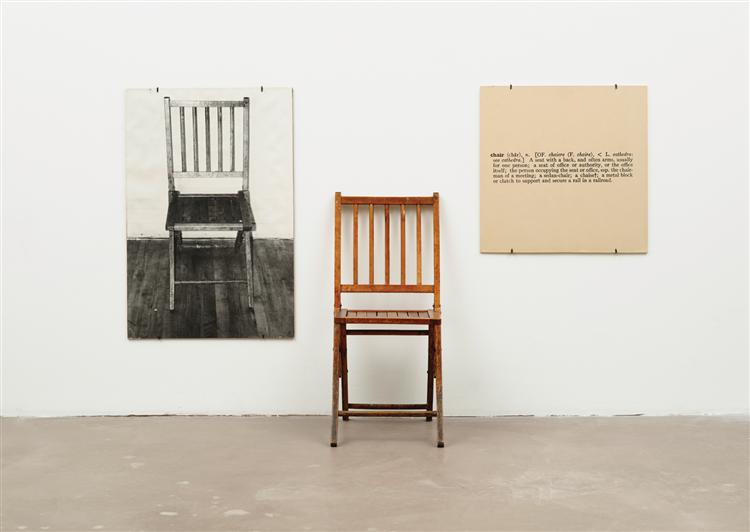
One and Three Chairs, 1965 Joseph Kosuth
Joseph Kosuth, One and Three Chairs, 1965. Courtesy the artist and Sean Kelly Gallery New York. - Joseph Kosuth. Iconic Works One and Three Chairs (1965) One of Kosuth's best-known works is One and Three Chairs (1965), which is his visual expression of Plato's Theory of Forms. The piece features a wooden chair, a photograph of the.

Artpla33 HISTOIRE DES ARTS 2015
Home Bookshelves Art SmartHistory of Art 2e SmartHistory of Art IXb - Modernism 1945-1980
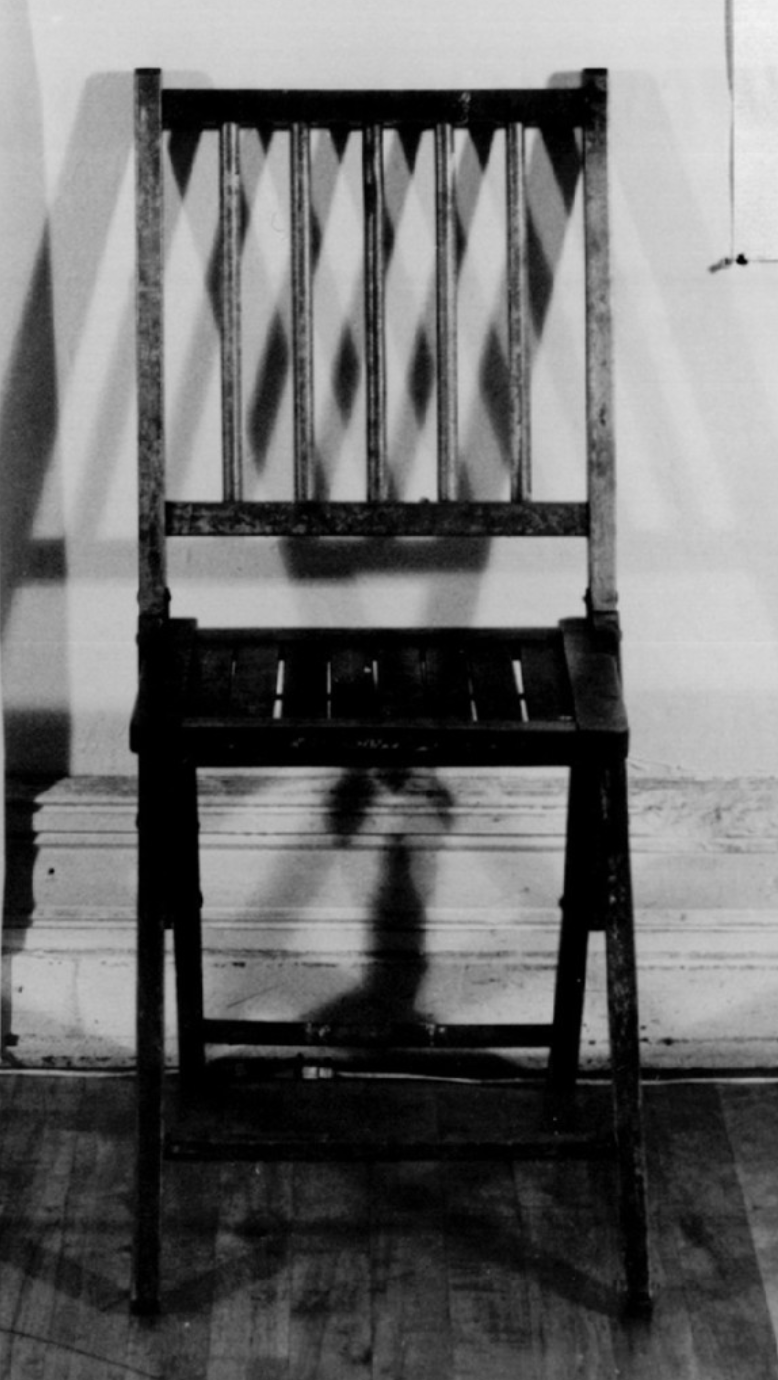
» Joseph Kosuth, One and Three Chairs
Joseph Kosuth One and Three Chairs (Une et trois chaises) 1965. Joseph Kosuth (1945, États-Unis). est conceptuel (par sa nature), parce que l'art n'existe que conceptuellement. » One and Three Chairs, qui met en scène un objet choisi pour sa banalité, reprend le readymade là où Duchamp l'avait laissé ; il l'enferme dans une.
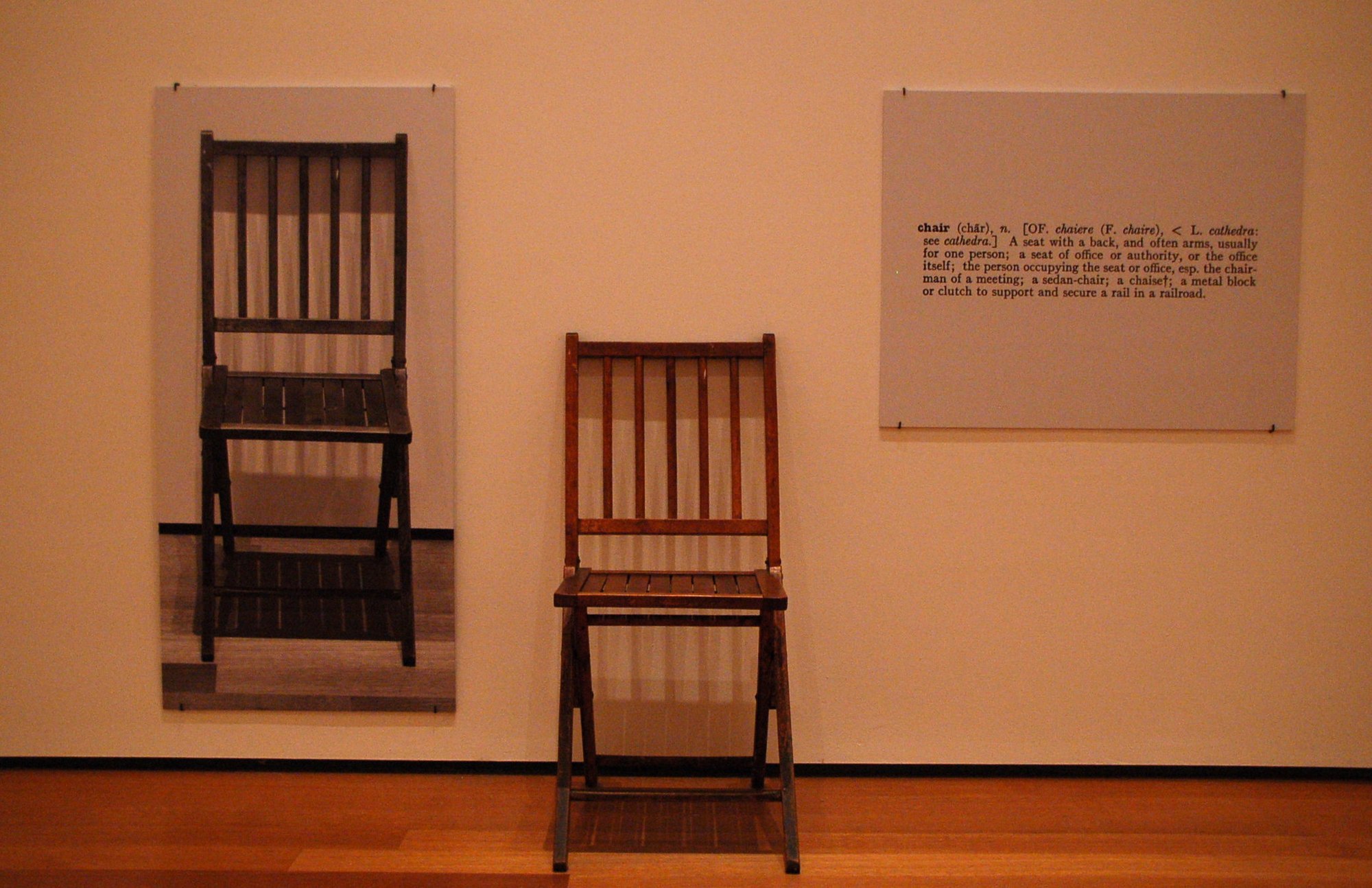
One and Three Chairs [Joseph Kosuth] Sartle Rogue Art History
How does it do so? 2. Do you think there is a single relationship between words and images? What is it? Do any of the works convey that? Do you think that art is the best way to represent that relationship?
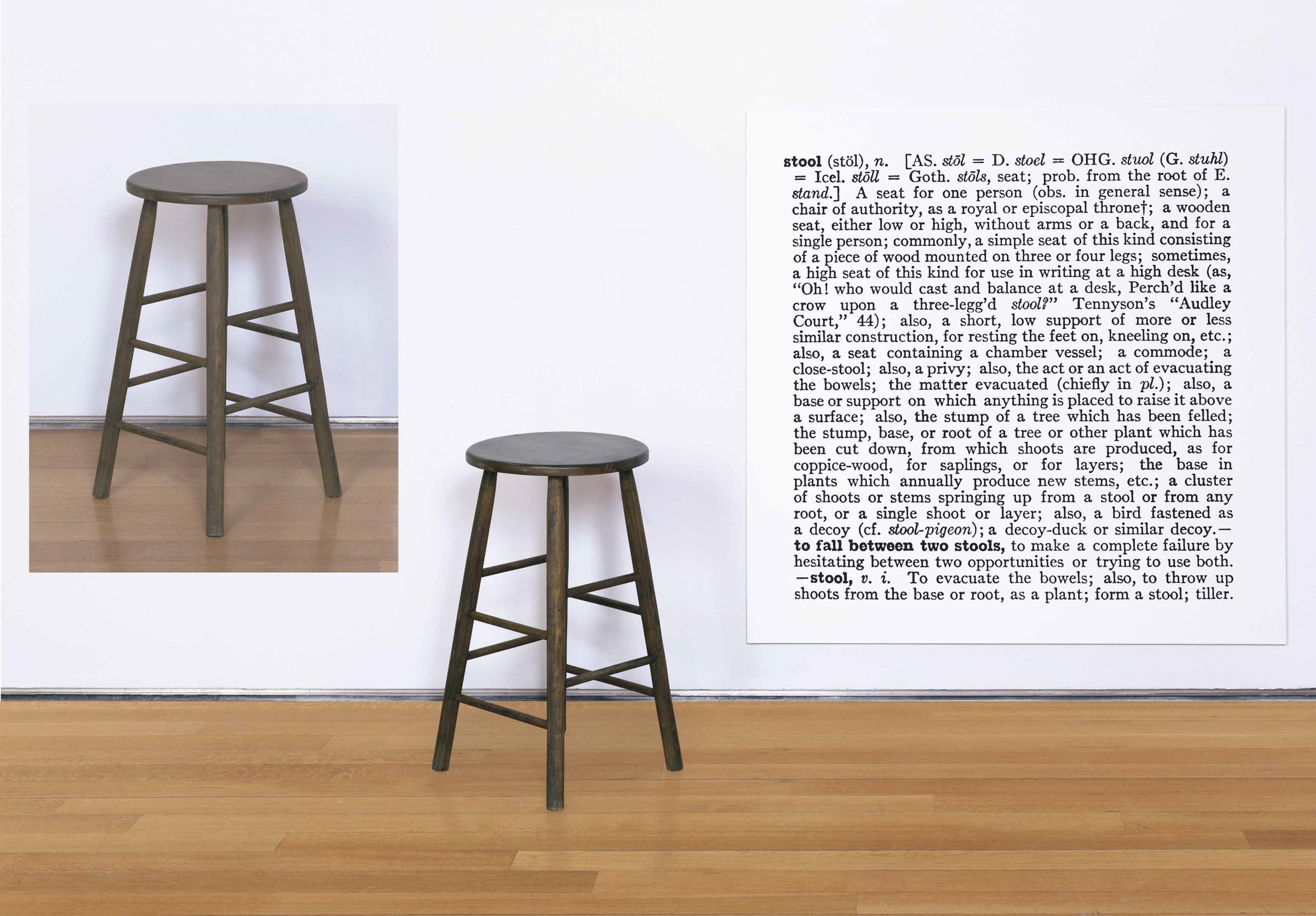
Kosuth Joseph 'One and Three Stools,' (1965) MutualArt
American artist Joseph Kosuth is one of the primary figures associated with the 1960s movement known as Conceptual Art. Along with Sol Lewitt, Lawrence Weiner, and other conceptual artists, Kosuth approached art-making from a radical new perspective. For them, the totality of an artwork was the idea behind it.
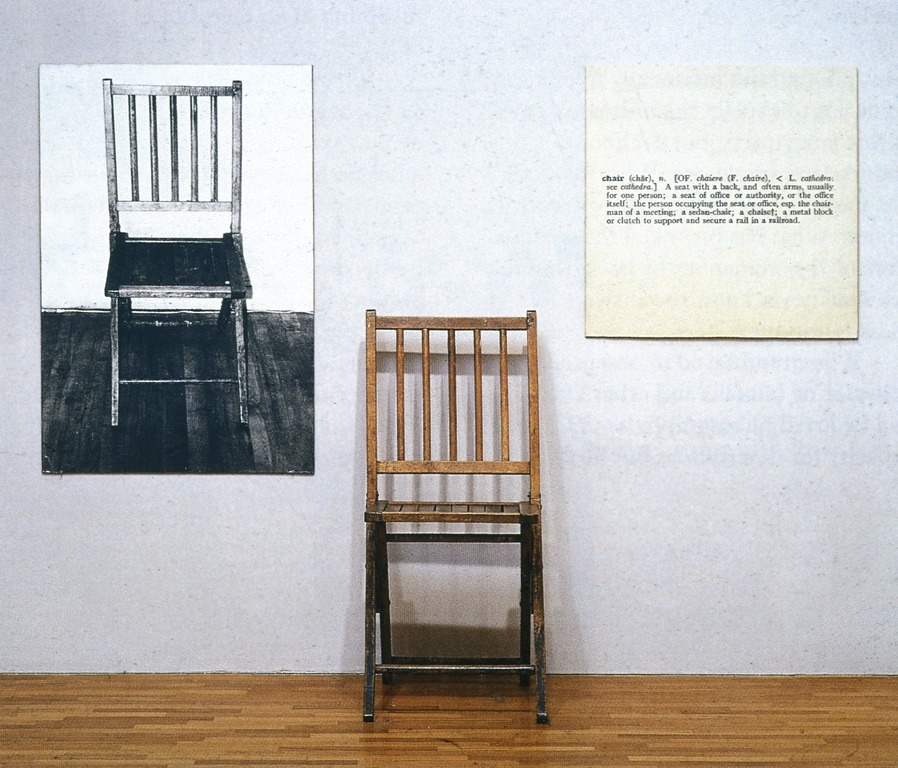
Cave to Canvas, Joseph Kosuth, One and Three Chairs, 1965 From...
One and Three Chairs, 1965, is a work by Joseph Kosuth. An example of conceptual art, the piece consists of a chair, a photograph of the chair, and an enlarged dictionary definition of the word "chair". The photograph depicts the chair as it is actually installed in the room, and thus the work changes each time it is installed in a new venue.
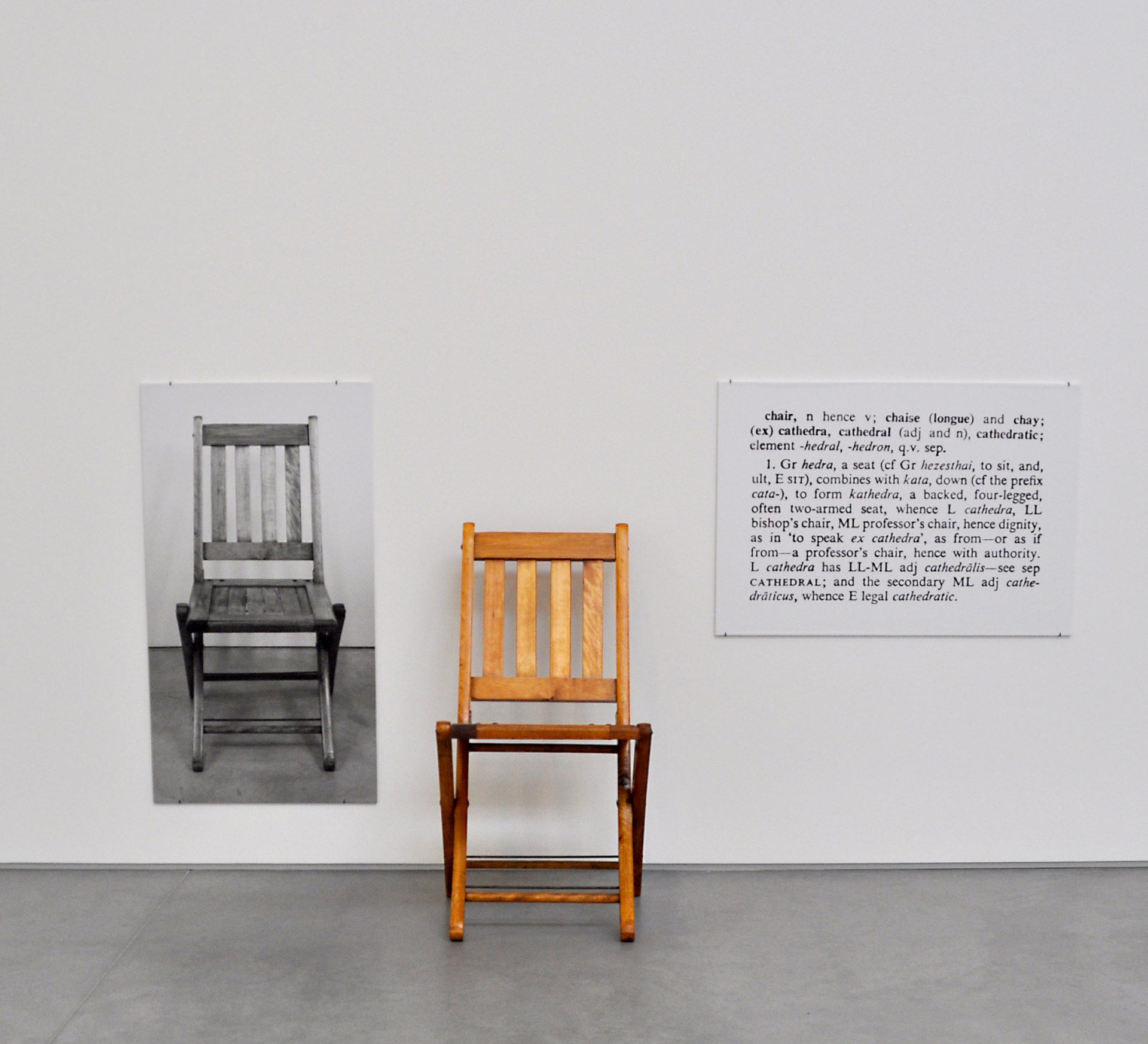
The Warehouse Dallas Joseph Kosuth
Joseph Kosuth, (born January 31, 1945, Toledo, Ohio, U.S.), American artist and theoretician, a founder and leading figure of the conceptual art movement. He is known for his interest in the relationship between words and objects, between language and meaning in art.
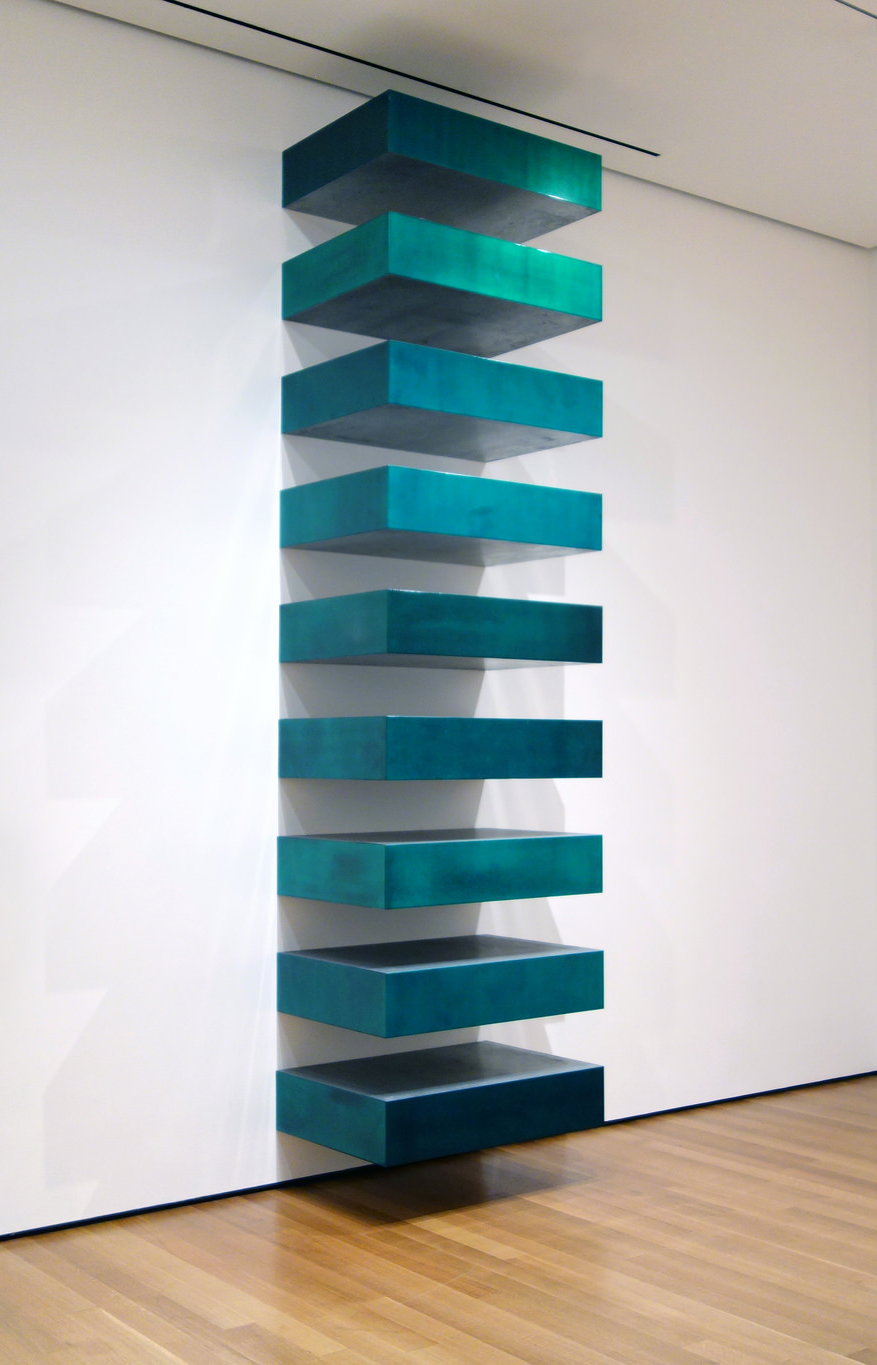
» Joseph Kosuth, One and Three Chairs
One and Three Chairs, 1965, is a work by Joseph Kosuth. An example of conceptual art, the piece consists of a chair, a photograph of the chair, and an enlarged dictionary definition of the word "chair". The photograph depicts the chair as it is actually installed in the room, and thus the work changes each time it is installed in a new venue.
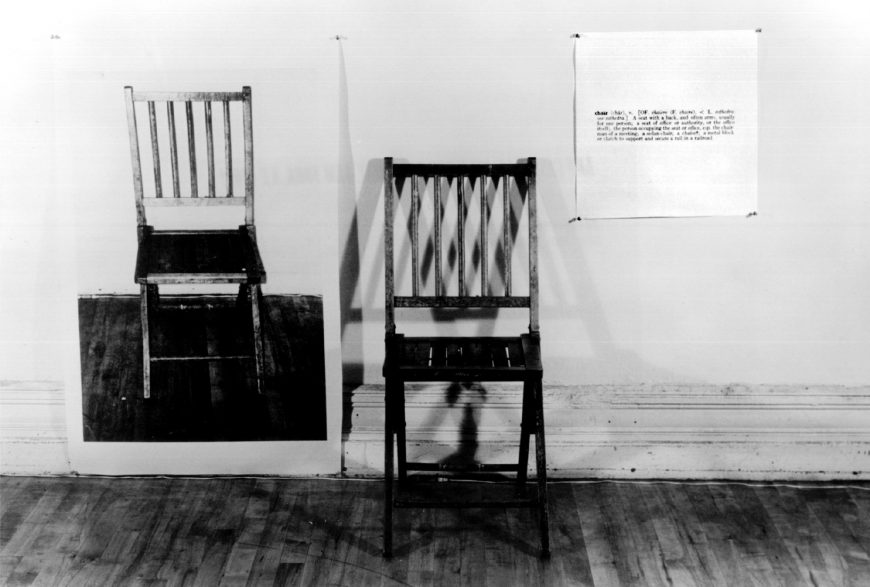
» Joseph Kosuth, One and Three Chairs
Joseph Kosuth once wrote: "The art I call conceptual art is such because it is based on an inquiry into the nature of art." One and Three Chairs is considered one of the first conceptual pieces conceived by the artist, according to a criterion that he himself described as "anti-formalist" and which, tautologically, approaches one single thought process from three separate perspectives.

One and Three Chairs (1965) Joseph Kosuth at Centre Pompidou. I
Joseph Kosuth, a conceptual artist, has placed a wooden folding chair against the wall and flanked it with two prints: a black and white photograph of the chair, and a of its dictionary definition.

301 Moved Permanently
Semiotics Joseph Kosuth, One and Three Chairs (detail), 1965, wood folding chair, mounted photograph of a chair, and mounted photographic enlargement of the dictionary definition of "chair" (MoMA)

Image of Joseph Kosuth’s One and Three Chairs, 1965 Joseph kosuth
Wood folding chair, mounted photograph of a chair, and mounted photographic enlargement of the dictionary definition of "chair", Chair 32 3/8 x 14 7/8 x 20 7/8" (82 x 37.8 x 53 cm), photographic panel 36 x 24 1/8" (91.5 x 61.1 cm), text panel 24 x 30" (61 x 76.2 cm). Larry Aldrich Foundation Fund. © 2024 Joseph
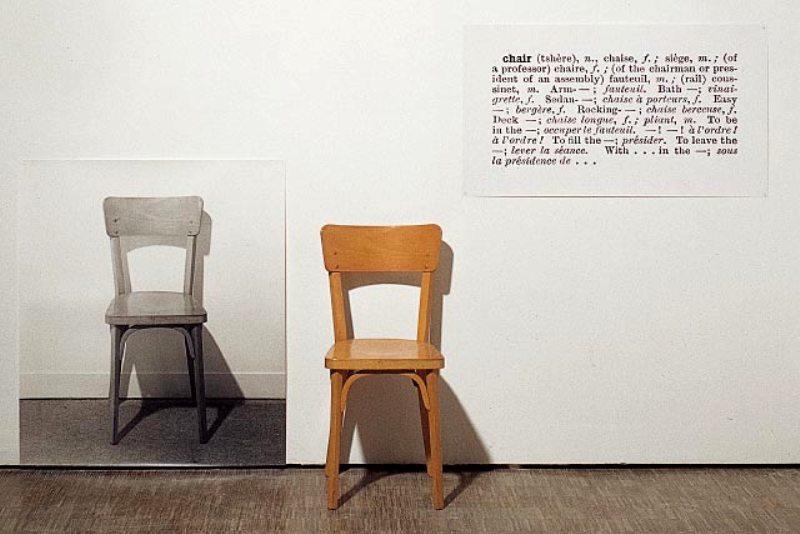
Espaço das Artes Os conceitos da arte
In 1965 Kosuth conceived a number of works using words written in neon that conveyed nothing more than what they were: 'Five words in red neon', for example, consisted of the five words of the title written in red neon lights, while 'One and eight - a description (pink)' consisted of the words 'Neon Electric Light English Glass.